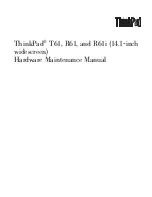
Session Router Configuration
251
achieving the set goal. Only when you are happy with the planned tables, functions and sequence
should you start configuration.
26.5 Configure the Entry Table on Circuit Interfaces
To activate the advanced Session routing the first lookup table in the CS interface has to be specified
as you can see in Figure 26-1. Make sure the routing parameter on the CS interface is configured in
order to forward the incoming calls to the first table of the Session Router.
Procedure
To configure the entry table in a CS interface
Mode
Context CS
Command
Purpose
Step 1
node
(ctx-cs)[
switch
]#interface
if-
type if-name
Change to Interface Configuration Mode to
specify the entry table in the interface
Step 2
node
(if-
type
)[
if-name
]#routing
dest-table
name
Specify the first lookup routing table of the
Session Router.
26.6 Configure Session Routing Tables
Routing tables are identified by names that can be any arbitrary string. For ease of identification the
table type is typically used as part of the name.
Session router tables are created by initially configuring a first entry and then appending lines with
the same table name. Refer to the individual table types detailed below on how to configure table
lines.
Note:
The sequence of the lines is not important. The Session Router creates a search tree out of the
table lines to ensure optimal search speed.
Note:
To remove tables the delete command can be used. Only entire tables can be deleted, not
individual lines.
26.6.1 Broadcast Handling in the Session Router
ISDN D-channel broadcast messages are used in various ISDN supplementary services, such as
CCBS (Completion of Calls to Busy Subscriber), CW (Call Waiting), and TP (Terminal Portability).
Such broadcast messages are always routed according to the default entry in the routing tables. If
there is no default entry the message is dropped which will result in the loss of the corresponding
call feature.
26.6.2 Configure Number Prefix for ISDN Number Types
The CdPN in an ISDN signaling message is of a defined number type;
national
,
international
or
unknown
. Depending on where the message originates (PSTN, Mobile Network, PBX) this number
type may differ. Table 19-1 illustrates the three number types.
Software Configuration Guide Release 2.10, Revision 1.00
Summary of Contents for SmartWare Release 2.10
Page 2: ...2 Legal Notice Software Configuration Guide Release 2 10 Revision 1 00...
Page 15: ...Terms and Definitions 15 Software Configuration Guide Release 2 10 Revision 1 00...
Page 218: ...218 PPP Configuration no shutdown Software Configuration Guide Release 2 10 Revision 1 00...
Page 272: ...272 Tone Configuration Software Configuration Guide Release 2 10 Revision 1 00...
















































